If you would like to add more datasheets to the comparison table you can still find and add them around the site while browsing, querying or searching Device Specs. Meanwhile you will not lose the comparison table below. Furthermore unnecassary datasheets can be removed by clicking on the "Remove from comparison" buttons (ever more than one item during one page load) but in this case reloading the table will be needed. Then click again on the appropriate header "Compare" button.
|
|
| | | | | |
|
Use the following link to refer to this comparison |
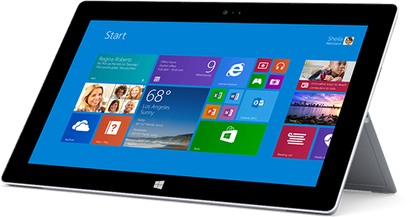
| 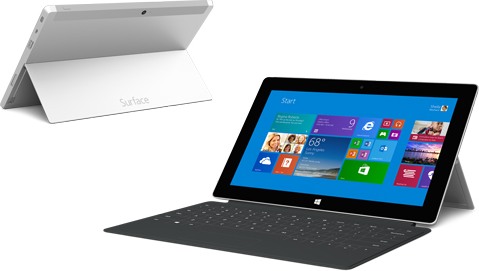
| 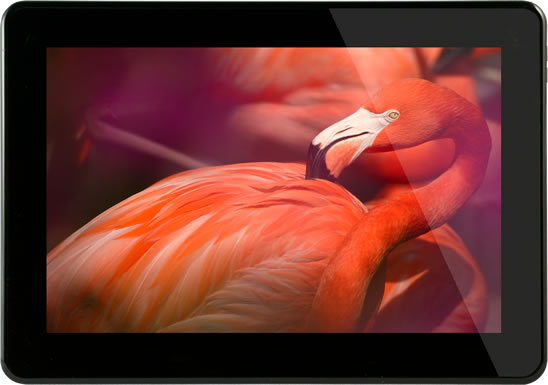
| 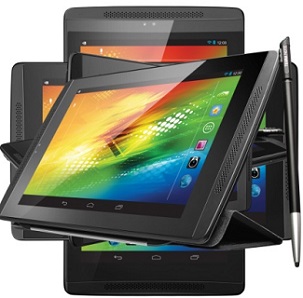
| 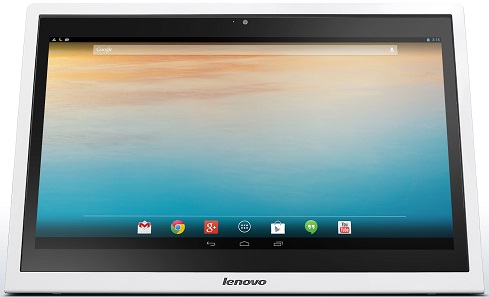
| 
|
|
Remove all |
|  Add to compare Add to compare | |  Add to compare Add to compare | |  Add to compare Add to compare | |  Add to compare Add to compare | |  Add to compare Add to compare | |  Add to compare Add to compare |
 Introduction Introduction |
Released |
2013 Oct 22 |
2013 Oct 22 |
2013 Dec |
2013 Dec 16 |
2014 Mar |
2014 Mar 18 |
Hardware Designer |
Microsoft |
Microsoft |
Quanta Computer |
|
Lenovo |
Microsoft |
Manufacturer |
|
|
Quanta Computer |
|
Lenovo |
|
OEM ID |
|
|
CCAI12LP1450T8 |
|
|
|
General Extras |
Kickstand |
Kickstand |
No |
No |
No |
Kickstand |
Device Category |
Tablet |
Tablet |
Tablet |
Tablet |
Tablet |
Tablet |
 Physical Attributes Physical Attributes |
Width |
275 mm |
275 mm |
262 mm |
199 mm |
489 mm |
275 mm |
Height |
173 mm |
173 mm |
183 mm |
119 mm |
323 mm |
173 mm |
Depth |
8.9 mm |
8.9 mm |
8.9 mm |
9.6 mm |
33 mm |
8.9 mm |
| Dimensions
| 10.83x6.81x0.35 inches |
10.83x6.81x0.35 inches |
10.31x7.20x0.35 inches |
7.83x4.69x0.38 inches |
19.25x12.72x1.30 inches |
10.83x6.81x0.35 inches |
Mass |
676 g |
676 g |
590 g |
320 g |
4600 g |
676 g |
|
23.85 ounces |
23.85 ounces |
20.81 ounces |
11.29 ounces |
162.26 ounces |
23.85 ounces |
 Software Environment Software Environment |
Platform |
Windows (mobile-class) |
Windows (mobile-class) |
Android |
Android |
Android |
Windows (mobile-class) |
Operating System |
Microsoft Windows RT 8.1 |
Microsoft Windows RT 8.1 |
Google Android 4.2.2 (Jelly Bean) |
Google Android 4.2.2 (Jelly Bean) |
Google Android 4.2.2 (Jelly Bean) |
Microsoft Windows RT 8.1 |
 Application processor, Chipset Application processor, Chipset |
CPU Clock |
1700 MHz |
1700 MHz |
1800 MHz |
1800 MHz |
|
1700 MHz |
CPU |
NVIDIA Tegra 4 T40S (Wayne), 2013, 32 bit, penta-core, 32 Kbyte I-Cache, 32 Kbyte D-Cache, 2048 Kbyte L2, 28 nm, NVIDIA GeForce ULP MP72 GPU |
NVIDIA Tegra 4 T40S (Wayne), 2013, 32 bit, penta-core, 32 Kbyte I-Cache, 32 Kbyte D-Cache, 2048 Kbyte L2, 28 nm, NVIDIA GeForce ULP MP72 GPU |
NVIDIA Tegra 4 T40S (Wayne), 2013, 32 bit, penta-core, 32 Kbyte I-Cache, 32 Kbyte D-Cache, 2048 Kbyte L2, 28 nm, NVIDIA GeForce ULP MP72 GPU |
NVIDIA Tegra 4 T40S (Wayne), 2013, 32 bit, penta-core, 32 Kbyte I-Cache, 32 Kbyte D-Cache, 2048 Kbyte L2, 28 nm, NVIDIA GeForce ULP MP72 GPU |
NVIDIA Tegra 4 T40S (Wayne), 2013, 32 bit, penta-core, 32 Kbyte I-Cache, 32 Kbyte D-Cache, 2048 Kbyte L2, 28 nm, NVIDIA GeForce ULP MP72 GPU |
NVIDIA Tegra 4 T40S (Wayne), 2013, 32 bit, penta-core, 32 Kbyte I-Cache, 32 Kbyte D-Cache, 2048 Kbyte L2, 28 nm, NVIDIA GeForce ULP MP72 GPU |
 Operative Memory Operative Memory |
RAM Type |
DDR3L SDRAM |
DDR3L SDRAM |
LPDDR3 SDRAM |
LPDDR3 SDRAM |
LPDDR3 SDRAM |
DDR3L SDRAM |
|
400 MHz |
400 MHz |
|
|
|
400 MHz |
RAM Capacity (converted) |
2 GiB RAM |
2 GiB RAM |
2 GiB RAM |
1 GiB RAM |
2 GiB RAM |
2 GiB RAM |
 Non-volatile Memory Non-volatile Memory |
Non-volatile Memory Interface |
Yes |
Yes |
Yes |
Yes |
Yes |
Yes |
Non-volatile Memory Capacity (converted) |
64 GB ROM |
32 GB ROM |
16 GB ROM |
16 GB ROM |
512 GB ROM |
64 GB ROM |
|
48000 MiB total user storage |
18500 MiB total user storage |
|
|
|
55700 MiB total user storage |
 Display Display |
Display Diagonal |
269 mm |
269 mm |
256 mm |
177.8 mm |
495.3 mm |
269 mm |
|
10.6 inch |
10.6 inch |
10.1 inch |
7 inch |
19.5 inch |
10.6 inch |
Resolution |
1920x1080 |
1920x1080 |
2560x1600 |
1280x800 |
1600x900 |
1920x1080 |
Horizontal Full Bezel Width |
40.55 mm |
40.55 mm |
44.91 mm |
48.23 mm |
57.31 mm |
40.55 mm |
Display Area Utilization |
65.0% |
65.0% |
61.4% |
60.0% |
66.4% |
65.0% |
Pixel Density |
208 PPI |
208 PPI |
300 PPI |
216 PPI |
94 PPI |
208 PPI |
Display Type |
Color TN-TFT LCD display |
Color TN-TFT LCD display |
Color ASV TFT LCD display |
Color IPS TFT LCD display |
Color TN-TFT LCD display |
Color TN-TFT LCD display |
Number of Display Scales |
16.8M |
16.8M |
16.8M |
16.8M |
16.8M |
16.8M |
Scratch Resistant Screen |
Gorilla Glass |
Gorilla Glass |
No |
No |
No |
Gorilla Glass |
 Graphical Subsystem Graphical Subsystem |
Graphical Controller |
NVIDIA GeForce ULP MP72 |
NVIDIA GeForce ULP MP72 |
NVIDIA GeForce ULP MP72 |
NVIDIA GeForce ULP MP72 |
NVIDIA GeForce ULP MP72 |
NVIDIA GeForce ULP MP72 |
 Audio/Video Interfaces Audio/Video Interfaces |
A/V Out |
HDMI 1.4 |
HDMI 1.4 |
No |
HDMI 1.4 |
No |
HDMI 1.4 |
|
HDMI D Micro |
HDMI D Micro |
No |
HDMI D Micro |
No |
HDMI D Micro |
 Audio Subsystem Audio Subsystem |
Microphone(s) |
stereo |
stereo |
mono |
mono |
mono |
stereo |
| Loudspeaker(s) |
stereo |
stereo |
stereo |
stereo |
stereo |
stereo |
| Audio Output |
3.5mm |
3.5mm |
3.5mm |
3.5mm |
3.5mm |
3.5mm |
 Cellular Phone Cellular Phone |
Supported Cellular Bands |
No |
No |
No |
No |
No |
GSM850,
GSM900,
GSM1800,
GSM1900,
UMTS2100 (B1),
UMTS1900 (B2),
UMTS850 (B5),
LTE1700/2100 (B4),
LTE2600 (B7),
LTE700 (B17) bands |
Supported Cellular Data Links |
No |
No |
No |
No |
No |
GPRS,
EDGE,
UMTS,
HSUPA,
HSDPA,
HSPA+ 21.1,
LTE,
LTE 100/50 data links |
SIM Card Slot |
No |
No |
No |
No |
No |
Micro-SIM (3FF) |
Complementary Phone Services |
No |
No |
No |
Vibrate |
No |
Speakerphone |
 Secondary Cellular Phone Secondary Cellular Phone |
 Control Peripherals Control Peripherals |
Touchscreen Type |
Capacitive multi-touch screen |
Capacitive multi-touch screen |
Capacitive multi-touch screen |
Capacitive multi-touch screen |
Capacitive multi-touch screen |
Capacitive multi-touch screen |
Touch Surface Type |
Capacitive multi-touch surface |
Capacitive multi-touch surface |
No |
No |
No |
Capacitive multi-touch surface |
Keyboard |
Attachable QWERTY |
Attachable QWERTY |
No |
No |
No |
Attachable QWERTY |
 Communication Interfaces Communication Interfaces |
Expansion Interfaces |
TransFlash,
microSD,
microSDHC,
microSDXC |
TransFlash,
microSD,
microSDHC,
microSDXC |
TransFlash,
microSD,
microSDHC,
microSDXC |
TransFlash,
microSD,
microSDHC,
microSDXC |
Yes |
TransFlash,
microSD,
microSDHC,
microSDXC |
USB |
USB 3.0 / 3.1 Gen 1 / 3.2 Gen 1x1 |
USB 3.0 / 3.1 Gen 1 / 3.2 Gen 1x1 |
USB 2.0 |
USB 2.0 |
USB 2.0 |
USB 3.0 / 3.1 Gen 1 / 3.2 Gen 1x1 |
|
USB HS (480 Mbps) |
USB HS (480 Mbps) |
USB HS (480 Mbps) |
USB HS (480 Mbps) |
USB HS (480 Mbps) |
USB HS (480 Mbps) |
| USB Services
| USB Host,
USB OTG 1.3,
USB PD |
USB Host,
USB OTG 1.3,
USB PD |
USB charging |
USB charging,
USB Host,
USB OTG 1.3,
USB PD |
USB Host,
USB OTG 1.3,
USB PD |
USB Host,
USB OTG 1.3,
USB PD |
| USB Connector
| USB A |
USB Micro-AB |
USB Micro-B (Micro-USB) |
USB Micro-AB |
USB Micro-AB |
USB A |
Bluetooth |
Bluetooth 4.0 |
Bluetooth 4.0 |
Bluetooth 4.0 |
Bluetooth 4.0 |
Bluetooth 4.0 |
Bluetooth 4.0 |
Wireless LAN |
802.11a,
802.11b,
802.11g,
802.11n |
802.11a,
802.11b,
802.11g,
802.11n |
802.11a,
802.11b,
802.11g,
802.11n |
802.11b,
802.11g,
802.11n |
802.11b,
802.11g,
802.11n |
802.11a,
802.11b,
802.11g,
802.11n |
| Wireless Services
| No |
No |
DLNA,
Wi-Fi Tethering |
DLNA,
Wi-Fi Tethering |
DLNA |
No |
NFC |
No |
No |
Yes |
No |
No |
No |
IR |
No |
No |
Yes |
No |
No |
No |
|
No |
No |
Yes |
No |
No |
No |
LAN |
No |
No |
No |
No |
1000 BASE-T (1Gbit/s) |
No |
 Multimedia Broadcast Multimedia Broadcast |
 Satellite Navigation Satellite Navigation |
Complementary Satellite Services |
Geotagging |
Geotagging |
Geotagging |
No |
No |
Simultaneous GPS,
A-GPS,
Geotagging,
QuickGPS |
Supported GLONASS protocol(s) |
L1OF |
L1OF |
L1OF |
No |
No |
L1OF |
 Primary Camera System Primary Camera System |
Camera Placement |
Rear |
Rear |
Rear |
Rear |
Rear |
Rear |
Camera Image Sensor |
CMOS |
CMOS |
CMOS |
CMOS |
CMOS |
CMOS |
Number of effective pixels |
5.0 MP camera |
5.0 MP camera |
13.0 MP camera |
5.0 MP camera |
1.9 MP camera |
5.0 MP camera |
Zoom |
1.0 x optical zoom |
1.0 x optical zoom |
1.0 x optical zoom |
1.0 x optical zoom |
1.0 x optical zoom |
1.0 x optical zoom |
Focus |
CD AF |
CD AF |
CD AF |
CD AF |
No |
CD AF |
Video Recording |
1920x1080 pixel |
1920x1080 pixel |
1920x1080 pixel |
1280x720 pixel |
640x480 pixel |
1920x1080 pixel |
|
30 fps |
30 fps |
30 fps |
30 fps |
|
30 fps |
Flash |
No |
No |
single LED |
No |
No |
No |
Camera Extra Functions |
Macro mode |
Macro mode |
No |
Macro mode |
No |
Macro mode |
 Secondary Camera System Secondary Camera System |
Secondary Camera Placement |
Front |
Front |
Front |
Front |
No |
Front |
Secondary Camera Sensor |
CMOS |
CMOS |
CMOS |
CMOS |
No |
CMOS |
Secondary Camera Number of pixels |
3.7 MP sec. cam |
3.7 MP sec. cam |
1.2 MP sec. cam |
0.3 MP sec. cam |
|
3.7 MP sec. cam |
Secondary Video Recording |
1920x1080 pixel |
1920x1080 pixel |
1280x720 pixel |
640x480 pixel |
|
1920x1080 pixel |
|
30 fps |
30 fps |
30 fps |
30 fps |
|
30 fps |
 Built-in Sensors Built-in Sensors |
Built-in compass |
Yes |
Yes |
Yes |
Yes |
Yes |
Yes |
Built-in accelerometer |
Yes |
Yes |
Yes |
Yes |
Yes |
Yes |
Built-in gyroscope |
No |
No |
Yes |
No |
No |
Yes |
Additional sensors |
No |
No |
No |
No |
No |
L sensor,
P sensor |
 Ingress Protection Ingress Protection |
Protection from solid materials |
Yes |
Yes |
Yes |
Yes |
Yes |
Yes |
Protection from liquids |
Yes |
Yes |
Yes |
Yes |
Yes |
Yes |
 Power Supply Power Supply |
Battery |
Li-ion polymer (LiPo) |
Li-ion polymer (LiPo) |
Li-ion polymer (LiPo) |
Li-ion polymer (LiPo) |
Li-ion polymer (LiPo) |
Li-ion polymer (LiPo) |
|
built-in |
built-in |
built-in |
built-in |
built-in |
built-in |
|
|
|
|
1-cell |
|
|
Estimated Battery Life |
10.0 hours |
10.0 hours |
|
|
|
8.0 hours |
 Geographical Attributes Geographical Attributes |
Market Countries |
No |
No |
No |
India |
No |
USA |
Market Regions |
No |
No |
No |
Asia |
No |
No |
Mobile Operator |
|
|
|
|
|
AT&T Mobility |
 Datasheet Attributes Datasheet Attributes |
Data Integrity |
Final |
Final |
Preliminary |
Preliminary |
Preliminary |
Final |
Added |
2013-09-23 20:13 |
2013-09-24 20:03 |
2013-11-29 17:11 |
2013-12-17 18:33 |
2014-01-09 17:43 |
2014-02-24 13:06 |